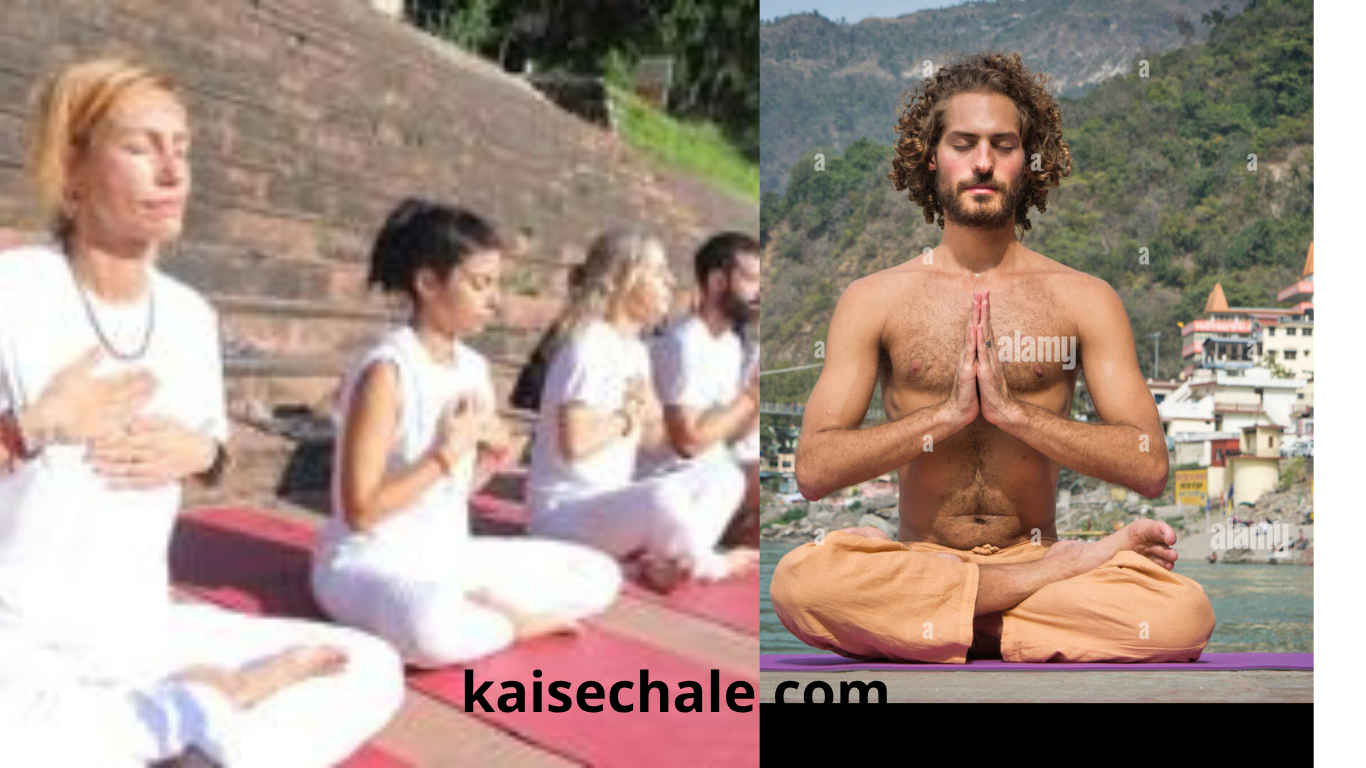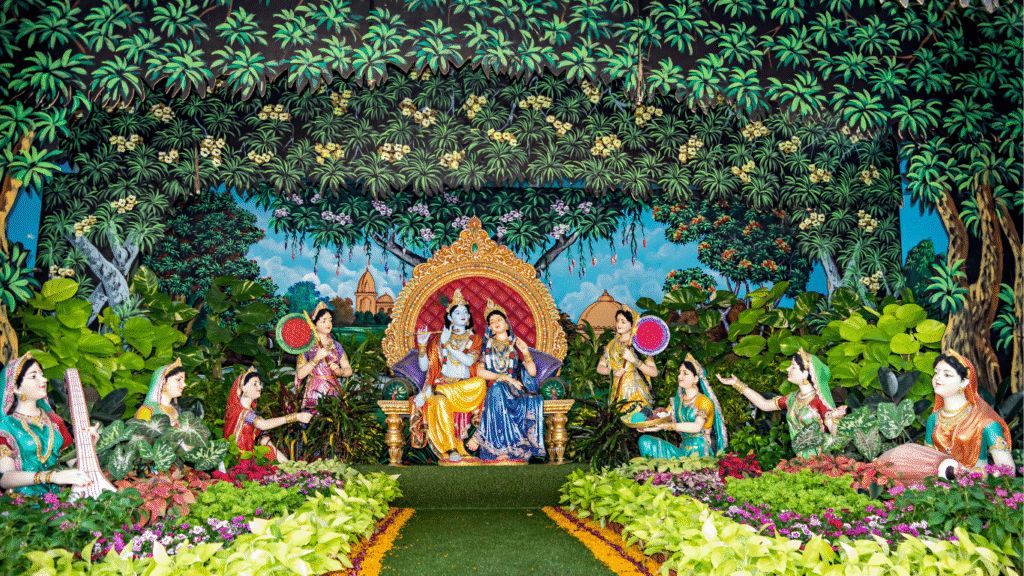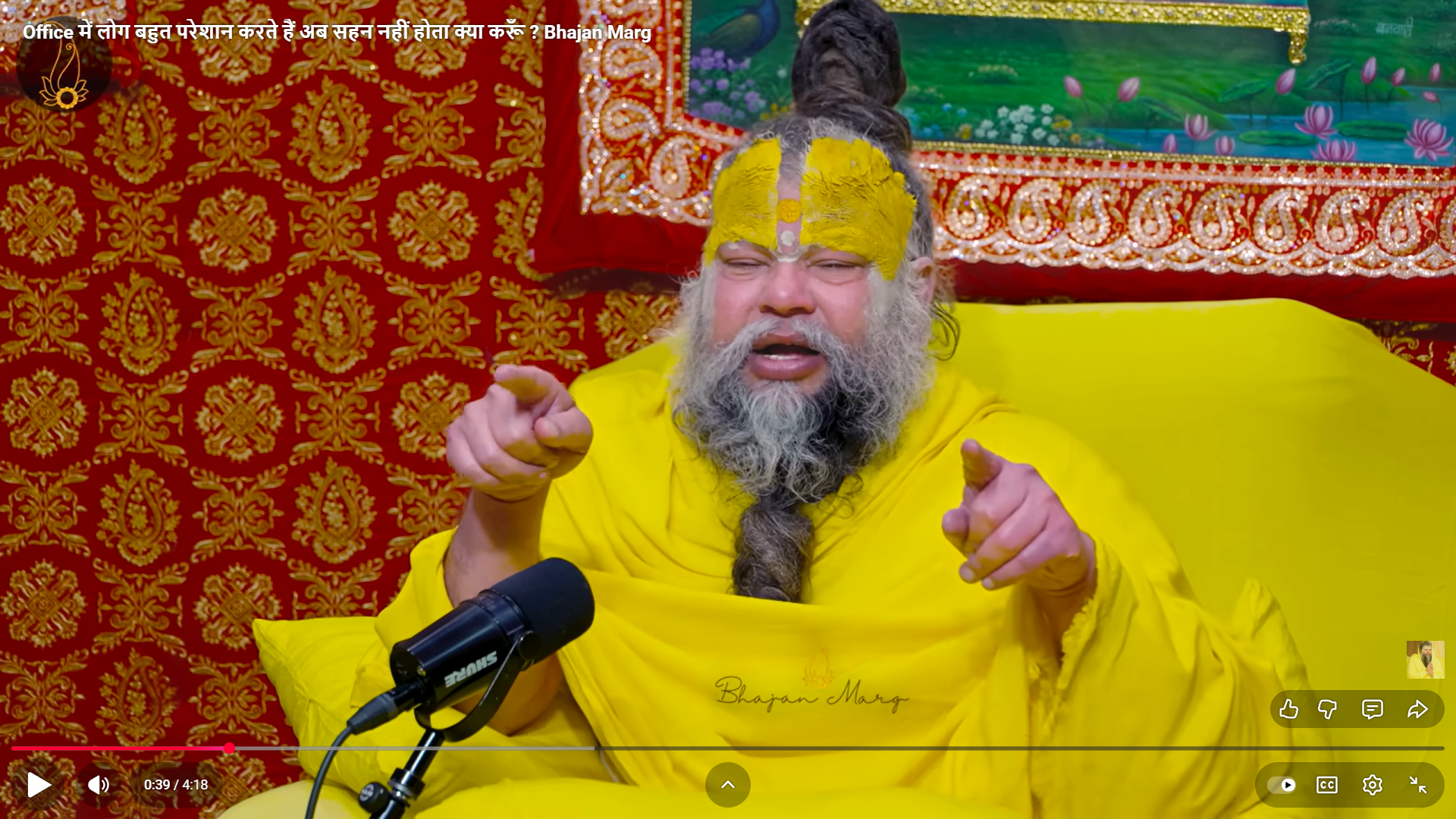
#IndianSpirituality #GlobalBhakti #AshramLife #SpiritualTourism #YogaMeditation #ForeignersInIndia #SpiritualStories #MiraclesOfIndia #EastMeetsWest
हिंदी-इंग्लिश संयुक्त शीर्षक:
“भारत की आध्यात्मिक विरासत: कैसे दुनिया ने अपनाया, विदेशी साधुओं की कहानियाँ एवं प्रेरक भक्ति यात्रा”“India’s Spiritual Heritage: How the World Embraced It, Stories of Foreign Yogis & Inspirational Bhakti Journeys”
भाग 1: हिंदी लेख
प्रस्तावना
भारत सदियों से आध्यात्म, भक्ति और ज्ञान का केन्द्र रहा है। विश्व के कोने-कोने से हजारों साधक, तीर्थयात्री, साधु-संत और रंग-बिरंगे श्रद्धालु भारत में शांति, मोक्ष, और आत्मज्ञान की खोज में आते हैं। वर्तमान युग में भी ध्यान, योग, आयुर्वेद और भक्ति, न केवल भारतीयों के जीवन का हिस्सा बनी है, बल्कि अब दुनिया के हर महाद्वीप में इसकी गूंज सुनाई देती है। यह आलेख विश्व में भारतीय अध्यात्म के प्रसार, इसके पीछे के कारण, भारतीय स्थलों में विदेशी साधकों के बसेरे, उनकी जीवनशैली, प्रेरक घटनाएँ, और चमत्कारी कहानियों को विस्तार से प्रस्तुत करता है।
1. कौनसे देश भारतीय आध्यात्म-भक्ति को अपनाते हैं और क्यों?
1.1 वैश्विक आकर्षण
-
अमेरिका, कनाडा, ब्रिटेन, फ्राजं, जर्मनी, रूस, जापान, ब्राजील, थाईलैंड, ऑस्ट्रेलिया, अर्जेंटीना, स्पेन आदि वे देश हैं जहां सबसे अधिक लोग भारतीय योग, ध्यान, वेदांत, और भक्ति परंपरा से जुड़े हैं।
-
इन देशों में तेज़ जीवन, मानसिक तनाव, उपभोक्तावादिता, और सूनेपन की समस्याओं का समाधान भारतीय अध्यात्म में मिलता है।
-
महिलाओं के लिए शक्ति, स्वतंत्रता एवं देवी उपासना की अवधारणा अत्यधिक आकर्षक रही है।
-
पश्चिम के परंपरागत धर्म (क्रिश्चियानिटी, यहूदी धर्म आदि) की जड़ता और ठोस उत्तरों की खोज भी लोगों को भारत की ओर आकर्षित करती है।
1.2 क्यों है यह आकर्षण?
-
भारतीय संस्कृति में आध्यात्मिकता न केवल धार्मिक है, बल्कि पूर्ण जीवनदर्शन है, जिसमें व्यक्तिगत मुक्ति, आत्मा-परमात्मा का मिलन, पुनर्जन्म और करुणा आदि की बातें हैं।
-
योग और ध्यान को विज्ञान सम्मत और जीवन बदलने वाली पद्धति के रूप में अपनाया गया है।
-
आत्म-खोज, व्यक्तिगत अनुभव को महत्व, और धर्मनिरपेक्ष भाव पक्ष ने भारत की विचारधाराओं को वैश्विक बना दिया है।
-
भारतीय गुरु, योगी और साधु पश्चिमी जगत में प्रेरक बने – विवेकानंद, महर्षि महेश योगी, परमंहस योगानंद, श्री श्री रविशंकर, सत्गुरु।
2. भारतीय अध्यात्म विदेशों में कैसे फैला: कहानियाँ और इतिहास
2.1 प्रारंभिक प्रसार
-
प्राचीन समय में यूनान, रोम, अरब देशों के विद्वान भारत में दर्शन और तंत्र ज्ञान सीखने आते थे।
-
उपनिषद, गीता, और बौद्ध धर्म के सिद्धांतों ने पूर्वी एशिया और पश्चिम एशिया तक पहुंच बनाई।
-
आधुनिक युग में स्वामी विवेकानंद ने 1893 के शिकागो विश्व धर्म महासभा में भारत का प्रतिनिधित्व किया, जिससे पश्चिमी दुनिया को भारतीय वेदांत, योग और भक्ति का परिचय मिला।
2.2 योग, ध्यान और भक्ति का वैश्विक विस्तार
-
1960-70 के दशक में बीटल्स बैंड का ऋषिकेश में आना और ट्रांससनडैंटल मेडिटेशन में प्रवेश पश्चिमी युवाओं के लिए आकर्षण का कारण बना।
-
महर्षि महेश योगी, श्रीमद्भगवद्गीता का प्रचार, श्री श्री रविशंकर का आर्ट ऑफ़ लिविंग, माताजी अमृतानंदमयी (अम्मा), सद्गुरु के ‘ईशा योग’ ने विदेशों में लाखों अनुयायी बनाए।
-
मैडिटेशन, योग, वेदांत, रिकी, आयुर्वेद, और भव्य आध्यात्म, अब शिक्षण, चिकित्सा, हीलिंग एवं व्यक्तिगत विकास के साधन बन चुके हैं।
-
पश्चिमी देशों के बड़े विश्वविद्यालयों में ‘इंडोलॉजी’, ‘बौद्ध अध्ययन’, ‘योग अध्ययन’ बतौर विषय शामिल किए जा चुके हैं।
2.3 आध्यात्म का आधुनिक डिजिटल रूप
-
सोशल मीडिया, ऑनलाइन योग-ध्यान क्लासेज, वेबिनार, ऐप्स, और यूट्यूब चैनल्स के माध्यम से भारतीय आध्यात्म घर-घर, हर देश में पहुंचा।
-
गीता, उपनिषद, ध्यान शास्त्रों के अंग्रेज़ी, स्पैनिश, फ्रेंच आदि भाषाओं में अनुवाद उपलब्ध हैं।
3. भारत में कौन-कौन सी जगहें विदेशी भक्तों और साधकों के लिए आकर्षण केंद्र है?
3.1 प्रमुख स्थल
-
ऋषिकेश: गंगा के किनारे, हिमालय की छाँव में योग की राजधानी, सैकड़ों विदेशी साधक यहां रहते हैं।
-
वाराणसी (काशी): आत्मिक मुक्ति के लिए प्रसिद्ध, यहाँ गंगा तट, घाट, मणिकर्णिका और सत्संग केंद्र विदेशी साधकों के ठिकाने हैं।
-
बोधगया: बुद्ध का ज्ञान प्राप्त स्थल, जापान, थाईलैंड, श्रीलंका, कोरिया, चीन आदि देशों के भिक्षु-साधक यहाँ साधना करते हैं।
-
धर्मशाला (मैकलोडगंज): तिब्बती बौद्ध मंत्र, दलाई लामा का निवास; योग, ध्यान और संयम का अंतरराष्ट्रीय केंद्र।
-
पुणे, इगतपुरी (धम्मगिरि): विपश्यना ध्यान, जहां विश्व का सबसे बड़ा मैडिटेशन सेंटर है।
-
कुंभ, हरिद्वार, पुष्कर, केदारनाथ, तिरुपति, अमृतसर, मथुरा, वृंदावन, अरुणाचल (तवांग), तिरुवनंतपुरम, कोयंबटूर (ईशा फाउंडेशन): ये स्थल धार्मिक, योग, एवं आंतरिक शांति के लिए प्रसिद्ध हैं।
3.2 कुंभ मेला:
-
विश्व का सबसे बड़ा आध्यात्मिक/धार्मिक समागम, जिसमें हर बार हजारों विदेशी भाग लेते हैं, और कई नवदीक्षित साधु-संत बनकर जीवन समर्पित करते हैं।
4. विदेशी साधक भारत में क्या करते हैं, उनका जीवन कैसा है?
4.1 आश्रमों में जीवन
-
रोज़ाना तीव्र अनुसाशित दिनचर्या: प्रातः 5-6 बजे ध्यान, योग, सत्संग, सामूहिक प्रार्थना।
-
सुबह-शाम योगासन, स्वाध्याय, मंत्रजाप, सेवा (कर्मयोग), ग्रंथ अध्ययन।
-
भोजन सादा, शाकाहारी एवं सात्विक; मौन में भोजन, सेल्फ सर्विस, स्वच्छता।
-
आश्रमों में ‘सेवा’ (Volunteer Work) जैसे सफाई, बागवानी, बच्चों की शिक्षा, पुस्तक-संपादन, रसोई में सहायता, आयुर्वेद चिकित्सा, योग-शिक्षण।
-
ध्यान अथवा योग केंद्रों में कुछ विदेशी शिक्षक भी बन जाते हैं, वहीं कई कलाकार, लेखक, हीलर अन्य साधकों की सहायता भी करते हैं।
-
सामूहिक साधना, कृतज्ञता, रात्रि में सत्संग, भजन, कीर्तन, जीवनानुभव साझा करना।
4.2 जीवनयापन और खर्च
-
कुछ विदेशी दीर्घकाल तक (महीनों-समय-समय पर वर्षों) मुफ्त में रहकर ‘सेवा’ करते हैं, जिसमें आवास व भोजन केंद्र की ओर से मिलता है।
-
कई साधक डिजिटल माध्यम (फ्रीलांसर, ऑनलाइन योग सिखाना, आर्ट/राइटिंग, विदेश से रॉयल्टी, दान आदि) से आजीविका चलाते हैं।
-
विदेशों में शिक्षकों/गुरु/हीलर्स के रूप में कार्य करते विदेशी साधक भारत में रहकर ऑनलाइन कक्षाएं भी चलाते हैं।
-
आश्रमों में साधारण जीवन, धन-संपदा की अपेक्षा आत्मिक सम्पन्नता, अपनत्व और शांति को महत्व।
-
कुछ अपने अनुभवों पर किताबें लिखते हैं, डाक्यूमेंट्री बनाते हैं, जीवन को समर्पित कर देते हैं।
4.3 प्रसिद्ध नाम, जीवन-घटनाएँ और किस्से
-
बाबा रामपुरी (अमेरिका): पहले विदेशी नागा साधु, 1970 में आए, पंचायती अखाड़े के सहभागी बने।
-
साध्वी भगवती सरस्वती (अमेरिका): कैलिफोर्निया में जन्मी, ऋषिकेश में स्थायी साधना जीवन तेज़।
-
सर जेम्स मलिंसन (ब्रिटेन): विद्वान, महंत, योगशास्त्र के शोधकर्ता, पराग्लाइडिंग कंपनी चलाते हैं।
-
बाबा मोक्षपुरी (अमेरिका): आर्मी से आध्यात्म में, बेटे की मृत्यु के बाद पूर्ण रूप से योग-ध्यान जीवन अपनाया।
-
स्वामी व्यासानंद गिरी (अमेरिका): आईटी पेशेवर से साधु बने, संन्यास लेकर हिंदू परंपरा को अपनाया।
-
जूलिया रॉबर्ट्स (हॉलीवुड अभिनेत्री): ‘ईट प्रे लव’ फिल्म के बाद हिंदू धर्म अपनाया, कई बार भारत आकर साधना की।
-
बीटल्स बैंड: ऋषिकेश में महर्षि महेश योगी के साथ ध्यान किया; पश्चिमी युवा संस्कृति में ट्रांसेंडैंटल मेडिटेशन को लोकप्रिय बनाया।
-
कई अन्य, यूरोप, ब्राजील, रूस, अफ्रीका, थाईलैंड के लोग; जो आश्रमों, साधना केंद्रों में साधक-सेवा भाव रखते हैं।
5. चमत्कार, प्रेरक घटनाएँ और वैश्विक विस्तार
5.1 साधकों के अनुभव
-
कई विदेशी साधकों ने ध्यान-साधना से डिप्रेशन, नशे, जीवन की निरर्थकता से उबरने का अनुभव साझा किया।
-
साधकों को गहरा मानसिक संतुलन, करुणा, अपनत्व, संवाद, समुदाय की अनुभूति हुई।
-
कई साधकों के लिए भारतीय गुरु का मार्गदर्शन चमत्कारी, जीवन-रक्षक बन गया।
-
कुंभ मेला, गंगा स्नान, आश्रम में खास पर्वों, ध्यान शिविरों के समय विशेष अनुभव और कथाएँ प्रचलित हैं।
-
आयुर्वेद, मंत्र चिकित्सा, तंत्र-साधना से भी भौतिक व मानसिक रोगों से मुक्ति के अनुभव।
5.2 उल्लेखनीय घटनाएँ
-
कोलंबिया, ब्राजील, स्पेन, फ्रांस आदि देशों से साधक माता अमृतानंदमयी (अम्मा) के आश्रम में हर साल आते हैं।
-
महर्षि महेश योगी, परमहंस योगानंद के शिष्यों ने अमेरिका व यूरोप में ‘क्रिया योग’, ‘ट्रांसेंडैंटल ध्यान’ की संस्थाएँ स्थापित कर दीं।
-
बीटल्स के ऋषिकेश प्रवास के बाद हर साल हजारों विदेशी वहाँ योग-ध्यान करना आते हैं।
6. भारतीय अध्यात्म-भक्ति के वैश्विक विस्तार के प्रमुख कारण
-
सांस्कृतिक खुलापन, आत्म-परिष्कार, तर्क और अनुभव की प्रधानता।
-
व्यक्तिगत मुक्ति की अवधारणा, धर्म का व्यक्तिगत अनुसंधान।
-
तीव्र आधुनिक जीवन में अवसाद, अकेलापन, तनाव का समाधान भारतीय अध्यात्म में मिलता है।
-
योग, ध्यान, आयुर्वेद, वेदांत का विज्ञानसम्मत पक्ष।
-
गुरु-शिष्य परंपरा, चमत्कारपूर्ण किस्से, व्यक्तिगत अनुभव – प्रेरणा का श्रोत।
-
पश्चिमी समाज में नए विकल्प, और वैश्विक संवाद की संप्रेषिता।
निष्कर्ष
भारत की आध्यात्मिकता का आकर्षण अनंत है। यहाँ की सांस्कृतिक विरासत के बीज अब विश्व के हर समाज, हर संस्कृति में अंकुरित हो चुके हैं। विदेशी साधकों की जीवनशैली, त्याग, सेवा और भक्ति ने भी इसे विस्तार दिया है। यह यात्रा संस्कृतियों के परस्पर समन्वय, व्यक्तिगत मुक्ति, और सार्वभौमिक शांति की दिशा में निरंतर आगे बढ़ रही है।
भाग 2: English Article
Preface
India has long been recognized as the cradle of spirituality, devotion, and wisdom. For centuries, seekers from every continent have journeyed to this land in search of peace, self-realization, and enlightenment. Today, yoga, meditation, Ayurveda, and Indian devotional traditions are not just integral to Indian life—they resound in every corner of the world. This comprehensive article delves into the global journey of Indian spirituality, the reasons behind its appeal, the centers in India where most foreign devotees reside, their lifestyles, inspiring incidents, miracles, and transformative stories.
1. Which Countries Embrace Indian Spirituality & Bhakti Most? Why?
1.1 Global Attraction
-
The United States, Canada, the UK, France, Germany, Russia, Japan, Brazil, Thailand, Australia, Argentina, and Spain stand out as nations with widespread adoption of Indian yoga, meditation, Vedanta, and devotional practices.
-
These societies often face issues of high-paced stressful lifestyles and isolation, leading them to seek joy, peace, and inner fulfillment through Indian spirituality.
-
Western women, in particular, are drawn to concepts like feminine divine Shakti, empowerment, and the inclusive aspects of Indian traditions.
-
The limitations and rigidity of traditional Western religious structures also push many to explore Indian paths of self-realization, spiritual experience, and direct knowledge.
1.2 Why This Fascination?
-
Indian spirituality is holistic—focusing on personal liberation, soul-God union, reincarnation, and compassion, not merely dogmatic adherence.
-
Yoga and meditation are embraced as science-backed, life-changing methods for enhancing mental health and spiritual growth.
-
The value given to self-exploration, personal experience, and secular acceptance of diverse paths has made Indian philosophies globally accessible.
-
Indian gurus and mystics such as Swami Vivekananda, Maharishi Mahesh Yogi, Paramahansa Yogananda, Sri Sri Ravi Shankar, and Sadhguru have inspired millions in the West.
2. How Indian Spirituality Slowly Spread Globally: Step by Step History
2.1 Early Dissemination
-
In ancient times, scholars from Greece, Rome, and Arabia traveled to India seeking knowledge in philosophy and tantra.
-
The Upanishads, the Bhagavad Gita, and Buddhism spread to East and West Asia, becoming pivotal in global philosophical discourse.
-
Modern dissemination began with Swami Vivekananda’s landmark speech at the 1893 World Parliament of Religions in Chicago, introducing Vedanta, yoga, and bhakti to the Western world.
2.2 The Modern Yoga, Meditation & Bhakti Movement
-
In the 1960s and 70s, the Beatles’ visit to Rishikesh for Transcendental Meditation under Maharishi Mahesh Yogi sparked a youth-driven wave of spiritual exploration in the West.
-
Swamis and gurus created ashrams and yoga centers worldwide—Art of Living, Isha Yoga, Amma’s Hugging Saint movement, centers by the Himalayan gurus, and Kriya Yoga institutions.
-
Meditation, yoga, Vedanta, Reiki, Ayurveda, and the broad umbrella of Indian spirituality became vital avenues for healing, personal development, and community in Western societies.
-
Universities in the US, Europe, Brazil, and Japan now include Indian philosophy, Buddhist studies, and yoga as subjects.
2.3 The Digital & Social Media Revolution
-
Spirituality is widespread on YouTube, Instagram, online courses, and meditation apps, making Indian practices accessible globally.
-
Classic texts such as the Gita and the Yoga Sutras are available in English, French, Spanish, and more—impacting millions.
3. Which Indian Places Are Most Popular Among Foreign Devotees & Spiritual Practitioners?
3.1 Key Hotspots
-
Rishikesh: Known as the World Capital of Yoga, nestled in the Himalayas along the Ganga, it attracts seekers from North and South America, Europe, Russia, and East Asia.
-
Varanasi (Kashi): The ancient spiritual heart of India; international devotees immerse themselves in the experience of the ghats, Ganga worship, and community satsangs.
-
Bodh Gaya: Site of Buddha’s enlightenment, a magnet for monks and seekers from Japan, Thailand, Sri Lanka, Korea, and China.
-
Dharamshala (McLeod Ganj): Center of Tibetan Buddhism; home to His Holiness the Dalai Lama, and a melting pot for Western meditators.
-
Pune, Igatpuri (Dhamma Giri): World’s largest Vipassana meditation center.
-
Major pilgrim sites: Kumbh Mela (Allahabad, Haridwar), Pushkar, Kedarnath, Tirupati, Amritsar, Mathura-Vrindavan, Arunachal’s Tawang, Thiruvananthapuram, Coimbatore (Isha Foundation).
3.2 Major Spiritual Festivals
-
Kumbh Mela: The world’s largest spiritual gathering, attracts thousands of foreigners every 12 years, many of whom get initiated as monks or devout practitioners.
4. What Do Foreign Devotees in India Do? Their Day-to-Day Life
4.1 Ashram Life
-
Foreigners in ashrams follow strict daily routines: rising with the sun for meditation and prayer, multiple yoga sessions, silent meals, and regular satsangs (spiritual discourses).
-
A day includes spiritual study, karma yoga (voluntary service—gardening, kitchen duties, cleaning, editing books, teaching), and community activities.
-
Meals are vegetarian and simple; silence during eating is observed for mindfulness.
-
Many take up roles as yoga and meditation instructors, artists, writers, or healers, while sharing skills to benefit the ashram or local community.
-
Nights involve group chanting (kirtan), readings, and contemplation.
-
Foreigners often remark that surrendering material comforts heightens their sense of wellbeing, belonging, and authentic happiness.
4.2 How They Sustain Themselves
-
Many live for free or at minimal cost in exchange for service (volunteering); room and board are often provided by ashrams.
-
Some conduct online classes, workshops, or freelance in writing, arts, or healing; several continue to earn royalties as authors or through foreign income.
-
Teachers, musicians, and therapists from abroad may generate additional income through global networks, while some simply live on personal savings.
-
For most, the focus is on spiritual abundance rather than material wealth—simplicity, self-sufficiency, and seva (service) become core values.
4.3 Famous Names, Stories, and Typical Experiences
-
Baba Rampuri (USA): The first foreign Naga Sadhu, initiated in 1970, closely involved with the ancient Panchayati Akhara.
-
Sadhvi Bhagawati Saraswati (USA): An academic from California, now residing as a spiritual leader in Rishikesh.
-
Sir James Mallinson (UK): British academic, ordained as a mahant (Hindu priest) and scholar of yoga history.
-
Baba Mokshpuri (New Mexico, USA): Left behind his life as a US Army officer after personal tragedy to find solace as a yogi in India.
-
Swami Vyasanand Giri (USA): From IT professional to naga baba in India, now an honorary Mahamandaleshwar.
-
Julia Roberts: Hollywood actress, after ‘Eat Pray Love’, converted to Hinduism, regularly visits India for chanting, worship, and spiritual retreats.
-
The Beatles: Their 1968 stay in Rishikesh popularized Transcendental Meditation, leading thousands of Westerners to explore Indian spirituality.
-
Countless others from Europe, Brazil, Thailand, and Africa have become fixtures in ashrams, meditation centers, and pilgrimages across India.
5. Miracles, Inspiring Incidents, and Unique Journeys
5.1 Transformative Experiences
-
Many recount recovery from depression and addiction, as well as profound psychological healing, through Indian practices.
-
Spiritual experiences include deep peace, a sense of community, compassion, connection, and transcendence.
-
For some, the advice or blessings of a guru or sadhu prove to be life-altering, guiding them through crises and doubts.
-
Places like Kumbh Mela, the banks of the Ganga, and Ashram festivals are seen as sites of community transformation and personal miracles.
-
Ayurveda, mantra therapy, and tantra practices have cured both physical and psychological ailments for international devotees.
5.2 Noteworthy Incidents
-
Every year, thousands from Colombia, Brazil, Spain, France, Israel, and the US spend time with Sri Amma (Amritanandamayi) or in Isha Yoga Center.
-
Dozens of Westerners have founded yoga and meditation centers in the West after learning under Indian masters.
-
Publications, documentaries, and memoirs by foreign monks and devotees continue to inspire others far beyond India’s shores.
6. Reasons for the Global Rise of Indian Spirituality & Devotion
-
Cultural openness, emphasis on self-transformation and experience, and a scientific approach to spiritual practices.
-
The pursuit of personal liberation, and the idea that spirituality is an individual’s journey, not just an institutional mandate.
-
Solutions to modern maladies—depression, isolation, and stress—through yoga, meditation, and Ayurveda.
-
The charisma and authenticity of Indian guru-shishya traditions, and the sense of universal brotherhood, compassion, and connection.
-
Miraculous, inspirational stories and the pursuit of a meaningful, peaceful existence.
-
The appetite for new answers, global digital communication, and a longing for transcendent meaning.
Conclusion
India’s spiritual legacy is truly timeless—its seeds have blossomed on every continent and within every culture. The dedicated lives of foreign seekers, their service, and their devotion have also enriched and internationalized India’s spiritual traditions. This journey signifies not just cultural diffusion, but the common human thirst for truth, liberation, and peace that knows no boundaries.
Note:यह आर्टिकल मात्र सूचनात्मक एवं प्रेरणास्पद तथ्यों एवं घटनाओं पर आधारित है। सभी स्थान, नाम एवं कहानियाँ संदर्भाधारित एवं शोधित हैं।









